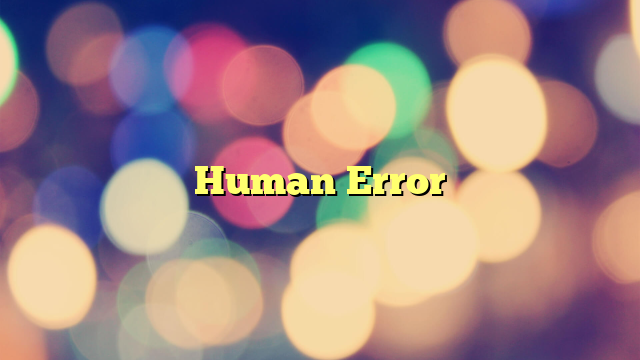The Impact of Human Error: Causes, Consequences, and Prevention
Introduction
Human error is an inevitable part of life, affecting individuals in various aspects of their daily activities. From simple mistakes in everyday tasks to critical errors in high-stakes professions, human error can have significant consequences. Understanding the causes, consequences, and prevention strategies for human error is crucial in improving performance and minimizing risks.
Causes of Human Error
There are several factors that contribute to human error, including:
- Lack of attention or focus
- Fatigue or tiredness
- Stress or pressure
- Lack of training or experience
- Poor communication
Consequences of Human Error
The consequences of human error can vary depending on the situation. In some cases, it may result in minor inconvenience or setbacks, while in others, it can lead to catastrophic outcomes, such as accidents, financial losses, or even loss of life. Understanding the potential consequences of human error emphasizes the importance of preventing it.
Prevention Strategies
There are several strategies that can help prevent human error, including:
- Training and education: Providing employees with adequate training and education can help improve their skills and knowledge, reducing the likelihood of errors.
- Standard operating procedures: Establishing clear, standardized procedures can help guide individuals in performing tasks accurately and consistently.
- Automation: Implementing automation in processes can reduce the reliance on human intervention, minimizing the risk of errors.
- Teamwork and communication: Encouraging teamwork and open communication can help identify and address potential errors before they escalate.
Conclusion
Human error is a common occurrence that can have significant consequences if not managed effectively. By understanding the causes, consequences, and prevention strategies for human error, individuals and organizations can work towards minimizing risks and improving performance. Implementing proactive measures and fostering a culture of continuous learning and improvement can help mitigate the impact of human error in various settings.




